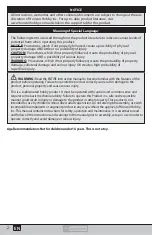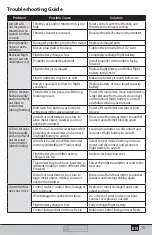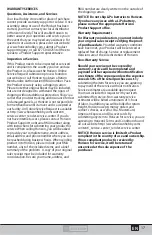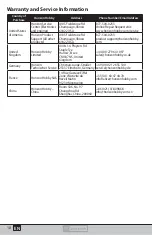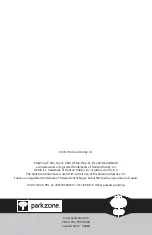
13
EN
Flying Tips and Repairs
Always
decrease throttle at
propeller strike.
NOTICE
We recommend fl ying your Mini Vapor in an indoor
location with a fl oor area of 15 ft x 15 ft and a
minimum ceiling height of 8 ft; a living room or
offi
ce is ideal. We suggest fi rst fl ights take place in
a larger area, like a garage or basement.
We do not recommend fl ying the Mini Vapor
outdoors unless the conditions are absolutely
calm. The Mini Vapor is extremely light and can be
easily blown away.
Hand Launching
Hold the Mini Vapor at shoulder height with one
hand. While holding your transmitter in your other
hand, increase the throttle to half. Launch the Mini
Vapor using light force. Keep the wings level and
do not throw it up or down. Point it level with the
ground when releasing. Do not grasp the pushrods
while launching as this may result in damage to
the servos.
Runway Takeoff
Place the Mini Vapor in position for takeoff .
Gradually increase the throttle to full and steer
with the rudder. Pull back gently with the elevator
and climb to check trim. Once the trim is adjusted,
begin exploring the fl ight envelope of the
Mini Vapor.
Flying
After takeoff , the Mini Vapor will climb at 3/4 to full
throttle. The Mini Vapor is designed for a slow and
relaxing fl ight experience. Fly at a slow, controlled
speed appropriate for the size of the location.
Landing
Fly the aircraft to approximately 6 inches (15cm) or
less above the landing surface. Reduce the throttle
and the Mini Vapor should glide in softly for a
landing.
Failure to lower the throttle
stick and trim to the lowest
possible positions during a
crash could result in damage
to the ESC in the receiver unit,
which may require replacement.
NOTICE:
Crash damage is not
covered under warranty.
Repairs
Repair the Mini Vapor using clear tape. When parts
are not repairable, see the Replacement Parts List
for ordering by item number.
For a listing of all replacement and optional parts,
refer to the list at the back of this manual.


